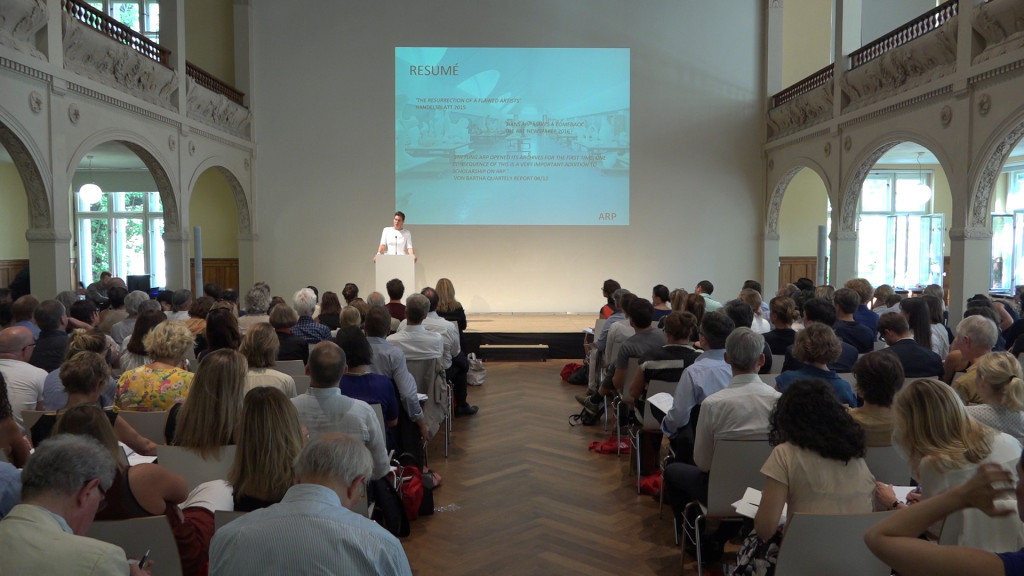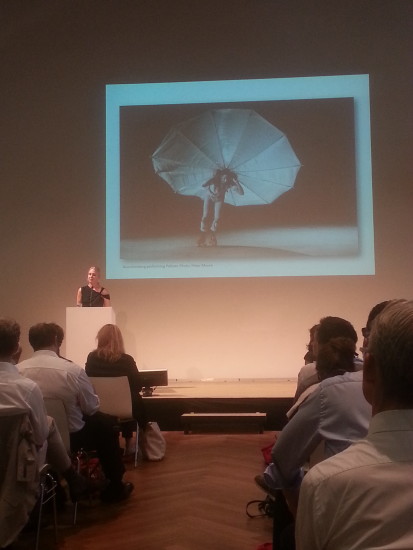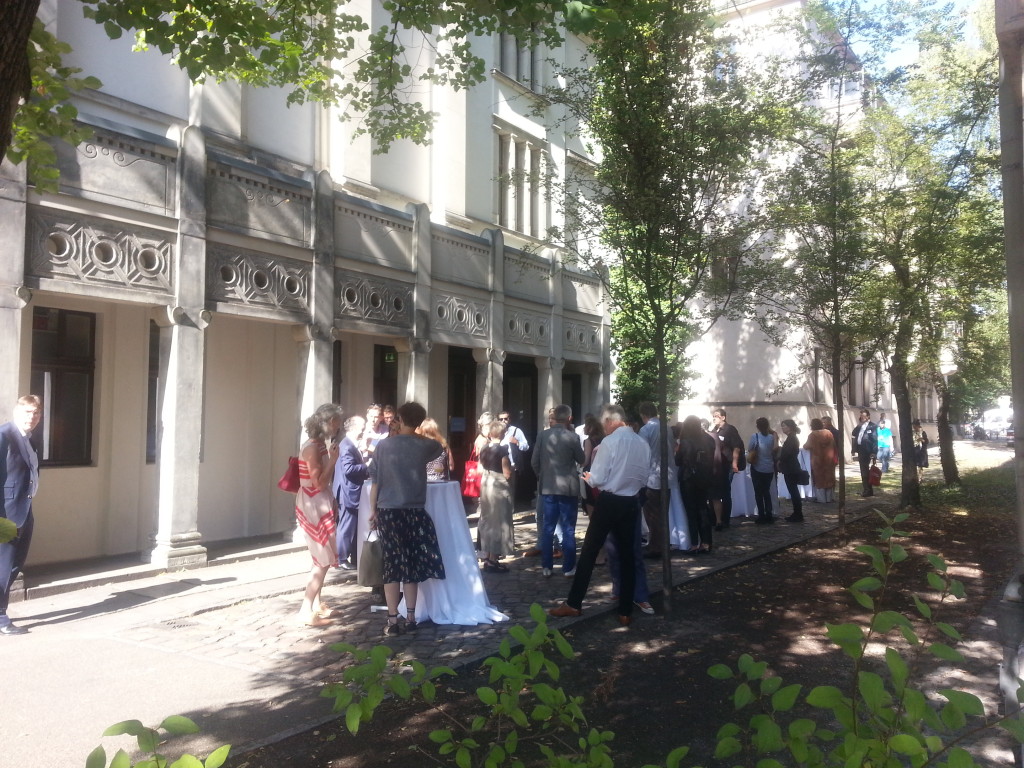This week’s contributing blogger, Aurica Kastner, just moved to Berlin from New York where she most recently worked in the Development Department of the American Academy in Rome. She received her MA in Curating at the Courtauld Insitute of Art in 2010 and is currently assisting with the exhibitions program at the project space Centrum in Berlin.
The Institute for Artists’ Estates, a platform for professional support, consulting, and networking for managers of estates, held its inaugural conference in Berlin on September 14-15, 2016. The event, led by Dr. Loretta Würtenberger, co-founder of the institute and author of the book The Artist Estate: a Handbook for Artists, Executors, and Heirs, included five panel discussions and four lectures. The conference brought together an impressive group of speakers from Europe and the United States including family members of prominent artists as well as art historians, curators, archivists and art dealers to discuss the do’s and don’ts around the preservation of an artist’s heritage. The full program can be found here.

Loretta Würtenberger at Keeping the Legacy Alive, 2016, photo: OTB Media, courtesy The Institute for Artists’ Estates
An interesting discussion came about in the panel “All fathers die, not these!”, a quote attributed to Erika Mann referring to her father Thomas Mann, capturing perfectly the determination and passion of the four invited speakers: Mayen Beckmann, granddaughter of Max Beckmann; Mary Moore, daughter of Henry Moore; Flavin Judd, son of Donald Judd; and Hélène Vandenberghe, daughter of Philippe Vandenberg. Each of the four speakers offered a short presentation about their role managing the estate and their relationship with their parents. They all presented different cases: Beckmann took over the estate after her father died but eventually handed it over to a museum; Moore has been actively engaged with the estate ever since her father passed away in 1986; Judd co-runs the estate with his sister but the process was tumultuous with litigations and endless paperwork; Vandenberghe and her two brothers decided to donate much of their father’s archive to a university in Ghent.
All shared the mission to represent and protect their ancestor’s legacy, which they perceive as a double-edged sword: on the one hand, they feel privileged to nurture and preserve the work and influence of their loved ones, on the other hand their role as caretakers often feels like a burden, a job they never really signed up for. While there is great honor and gratification in managing the work and legacy of their fathers, it also involves many challenges: as relatives, is their viewpoint biased when making decisions? Vandenberghe explained the difficulty in making public some personal letters that she had written to her father. However, they all agreed that the heirs are the people most qualified to manage the estate because they truly knew the artist and their work well enough. Finally, they concluded with a few words of advice: if possible, an artist should start planning his or her estate while they are still alive and, most importantly, the heirs should allow themselves plenty of time to plan the estate.
In her talk, CEO of the Robert Rauschenberg Foundation Christy MacLear advised young foundations to clearly set out their goals from the beginning and have a realistic financial picture. Regarding the leadership, she urged heirs to appoint a professional and diverse group of people who have different skill sets and are not necessarily family members, as there may be conflicts of interest. She also highlighted the importance of taking your time and testing your projects: for example, the Rauschenberg Foundation piloted their scholarship for artists residencies in Captiva, Florida, with just a handful of artists at the beginning. The pilot showed that a 5-week duration worked best for each artist.

Christy MacLear, CEO of the Rauschenberg Foundation giving her talk “‘Building The Robert Rauschenberg Foundation”
Loretta Würtenberger, manager of the Hans Arp and Sophie Taeuber-Arp Estate since 2009, shared her insights on repositioning the estate of Hans Arp forty years after it was founded. She explained that the estate’s finances had previously been mismanaged and the question of posthumous casting was left open, which led to Arp’s image being diminished (as seen by the outdated catalogue raisonné, the lack of major exhibitions in the US since 1983, and limited academic interest). Revitalizing Arp’s legacy was a difficult task that required a lot of groundwork, but collaborating with museums, academics, and the art market, Würtenberger managed to put Arp back on the map and redefine the goals of the foundation. Overall, the key element for her success was to have a clear strategy from the beginning, with well-defined goals about what the foundation wanted to achieve for the artist.
Another session worth noting was the debate about the management of estates by museums, which has changed over time, museums having become more selective about what they accept. Joost Declercq, art historian and director of the Dhondt-Dhaenens Museum, argued against donating estates to museums because, according to him, museums lack the sensibility and flexibility that the family has. Thomas Köhler, director of the Berlinische Galerie, argued that most museums lack the space, time, and resources to accept most offers, but he also encouraged museums to carefully examine the works as often there are valuable and unique pieces that deserve to be highlighted. Furthermore, he added that museums should not feel forced to accept estates but that they can give advice regarding documentation and restoration, whereas tax and legal advice should be sought elsewhere.

Attendees mingling outside of the conference venue (the Villa Elisabeth in Berlin)
All sessions of this conference were received with zeal as well as constructive feedback and the conversation continued beyond the official program, including a spontaneous visit to the Jean Arp Estate in Berlin. Finally, it was encouraging to learn that quite a number of foundations, estates and catalogue raisonnés represented at the conference (including Rauschenberg, Arp, and Cézanne) are making their images and documents available online for educational use, one of the most direct and effective ways to preserve the legacy of an artist.
